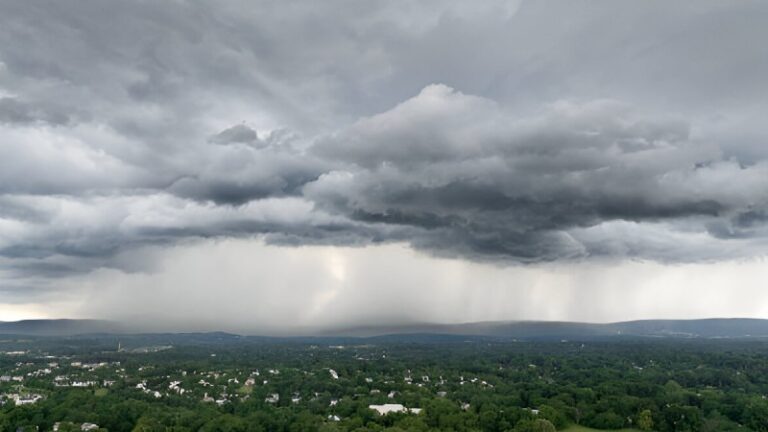In March 2025, the United States was once again reminded of the destructive power of nature when Hurricane Helene battered the Southeast. The storm, described by the National Oceanic and Atmospheric Administration (NOAA) as the deadliest hurricane to hit the mainland since Katrina, left behind more than $78.7 billion in damages and reshaped how communities, businesses, and policymakers think about climate resilience.
But beyond the tragic headlines, there’s a deeper story: how extreme weather is not just a series of isolated events but part of a growing trend tied to climate change. Reporting on these storms is no longer only about documenting destruction it’s about uncovering how societies adapt, how infrastructure holds up, and what lessons can be learned for the future.
A New Lens on Storm Reporting
Traditionally, storm coverage has focused on immediate damage: toppled homes, flooded streets, and human displacement. While those are critical, today’s journalism must also address a broader set of questions:
- What patterns are emerging across different types of extreme weather?
- How are businesses and health systems adjusting to a future where storms are stronger?
- What innovative solutions are communities testing to reduce risk?
This broader perspective helps audiences not only understand the scale of disasters but also their ripple effects on infrastructure, public health, and economic resilience.
The Scale of the Disaster
To appreciate Hurricane Helene’s significance, it helps to place it in context. According to NOAA’s Billion-Dollar Weather and Climate Disasters database, the U.S. experienced 27 climate-related disasters in 2024 alone, with costs totaling $182.7 billion. Helene, striking in 2025, reinforced this escalating trend.
| Year | Number of $1B+ Disasters | Total Economic Loss (USD) |
|---|---|---|
| 2000 | 10 | $25.5B |
| 2010 | 14 | $47.2B |
| 2020 | 22 | $95.0B |
| 2024 | 27 | $182.7B |
| 2025 (Helene alone) | 1 | $78.7B |
Infrastructure Under Pressure
Helene underscored how vulnerable U.S. infrastructure remains. Beyond power outages and flooded highways, the storm damaged renewable energy assets such as solar farms in Florida and Texas. Tornadoes spawned by the hurricane tore through a 62MW solar project in Highlands County, demonstrating that even clean energy infrastructure is not immune.
This highlights a paradox: while renewable energy is essential for reducing climate change, it must also be climate-proofed to survive in a world of stronger storms. Operators are now experimenting with tactics such as:
- Automated hail stow systems for solar panels
- Elevated inverters to protect against flooding
- Drone-based monitoring for real-time site assessment
The Business Continuity Angle
Hurricane Helene also disrupted commerce far beyond its immediate strike zone. Flights were canceled, conferences postponed, and supply chains delayed. Event organizers in particular are facing new realities. A 2025 global survey found that 72% of executives are adopting new risk management strategies due to climate extremes, yet only 20% consider it their top threat.
This disconnect raises a vital question: are businesses underestimating weather risk? For many, the financial losses from cancellations or damaged assets now rival traditional operational risks.
Insurance as a Lifeline
The surge in weather-related losses has elevated the role of event cancellation and business interruption insurance. Whether it’s a concert in Miami, a trade show in Atlanta, or a tech expo in Dallas, coverage now extends beyond routine mishaps to account for hurricanes, heatwaves, and even wildfire smoke.
Quick action is key. Experts recommend that once disruption occurs, organizers should:
- Notify insurers immediately
- Work with loss adjusters to minimize financial harm
- Communicate transparently with attendees about refunds or rescheduling
The Health Dimension
Extreme weather is not just an infrastructure or business issue — it’s a health crisis. Storms bring contaminated water, mold, mental health stress, and interrupted access to medication. During Helene, power outages stranded thousands of patients who relied on refrigerated insulin or electric-powered oxygen machines.
Some states are experimenting with policies to address this intersection of climate and health:
| State | Policy Example |
|---|---|
| Oregon | Medicaid waiver funding air conditioners and air filters during declared climate emergencies |
| Washington | Incentives for hospitals to complete climate adaptation and emissions surveys |
| Connecticut | Partnership with state Green Bank to provide backup power for vulnerable residents |
These measures may seem technical, but they can be lifesaving. They demonstrate how cross-sector partnerships health, energy, and insurance are essential to protecting communities in a warming world.
Learning from the Past, Planning for the Future
Interestingly, the need for stronger resilience is not new. A 2013 report titled Weathering the Storm: Building Business Resilience to Climate Change warned that most companies were planning only for business as usual, relying on historical data instead of future climate projections. More than a decade later, Hurricane Helene proves that those warnings were prescient.
What’s different today is that more businesses, state agencies, and communities are beginning to treat climate resilience not as an optional add-on, but as a core strategic priority.
Fresh Perspectives for Reporting
So how can journalism bring new value when covering major storms? Here are three fresh perspectives worth exploring:
- Follow the money: Track how billions in recovery and insurance payouts are spent, and whether they reduce future risk or merely rebuild vulnerabilities.
- Highlight inequities: Show how low-income or marginalized communities are disproportionately affected, both during disasters and in recovery phases.
- Report on resilience: Cover not just the damage, but also the innovations from drone monitoring of solar farms to Medicaid-funded air filters — that could set new standards for adaptation.
Conclusion
Major weather events like Hurricane Helene are harrowing reminders of our vulnerability, but also of our capacity for adaptation. Reporting on them should go beyond counting casualties and costs. It should unpack the structural weaknesses they reveal, spotlight the innovations that emerge, and hold institutions accountable for building resilience.
In an era of climate uncertainty, weathering the storm is not just about surviving the next hurricane or flood. It’s about transforming how we design, insure, and support our communities so that when the next storm arrives as it inevitably will we are stronger, safer, and more prepared.


